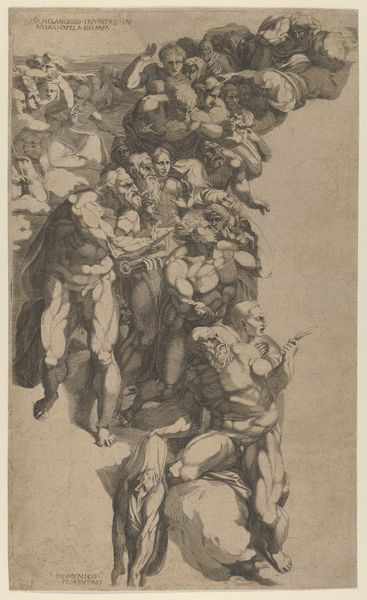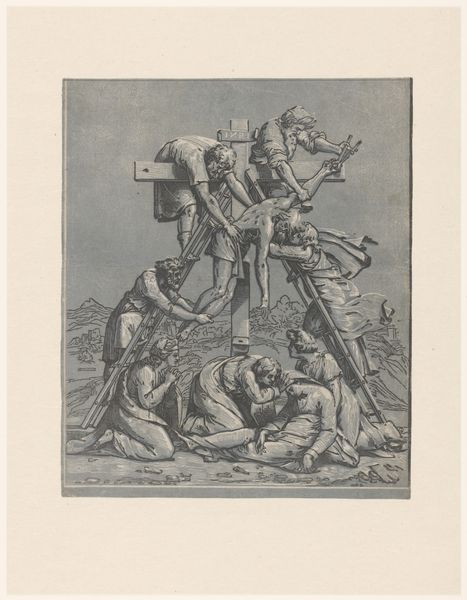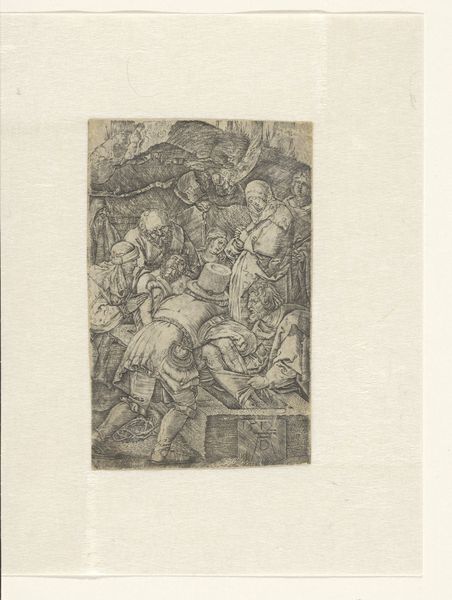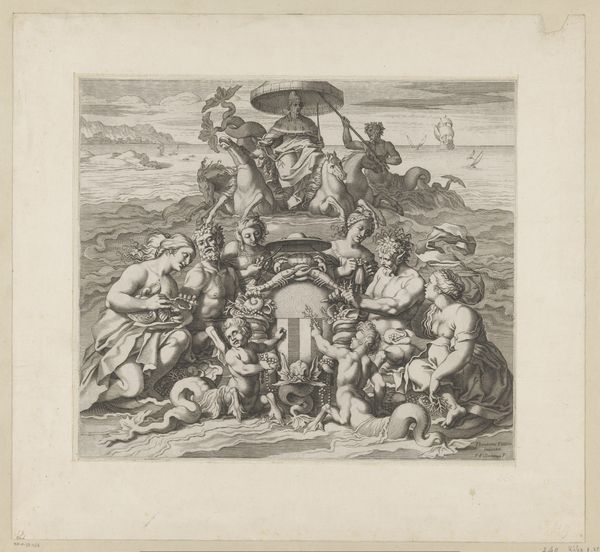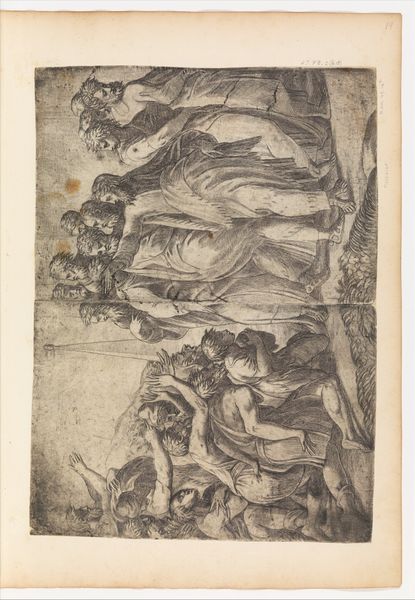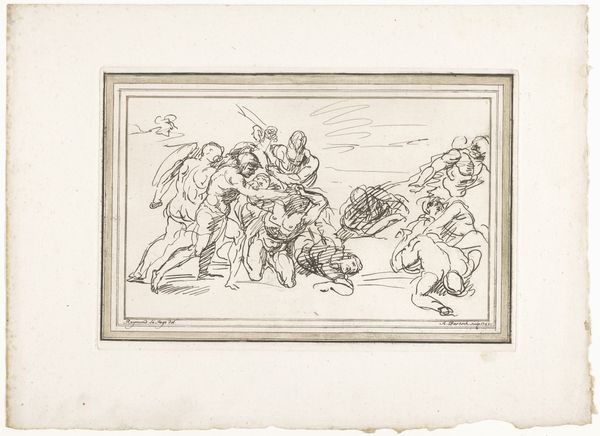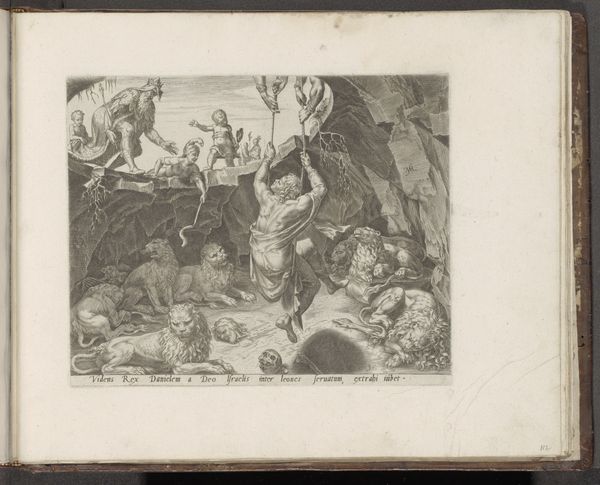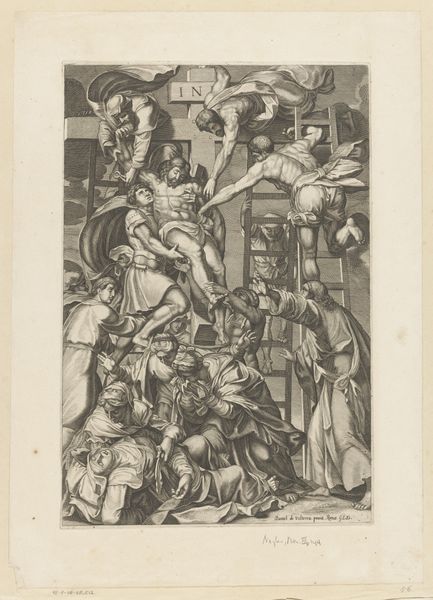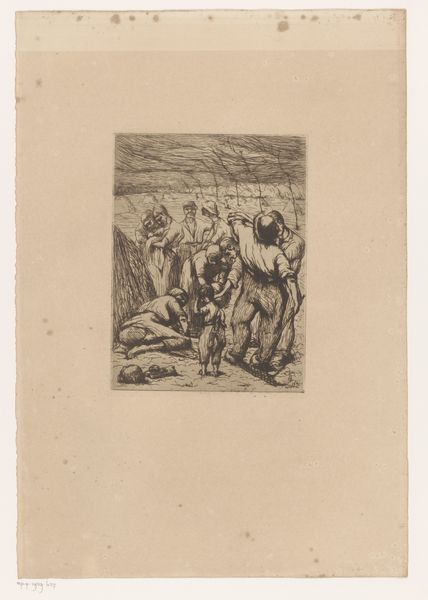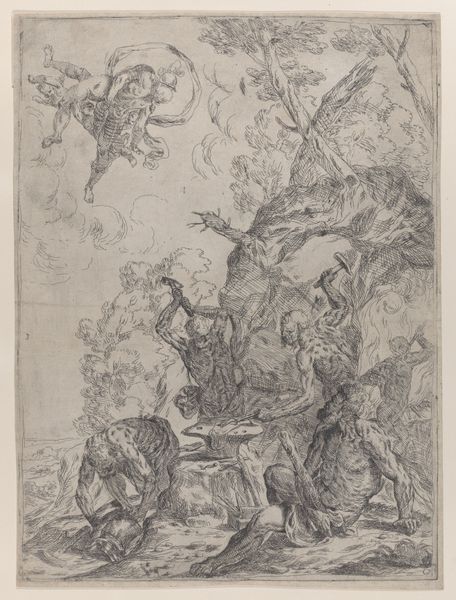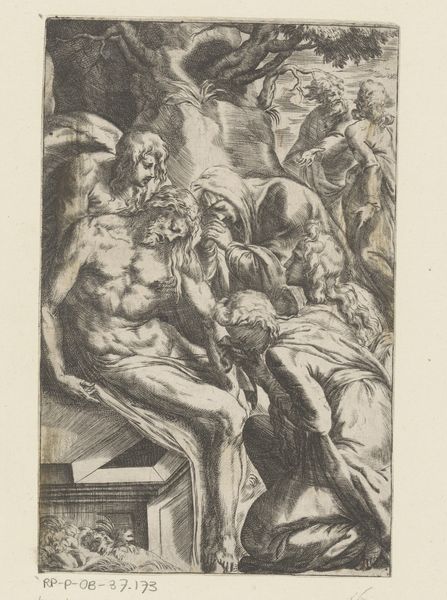
Trumpeting Angels from The Last Judgment, after Michelangelo 1530 - 1566
0:00
0:00
drawing, print, engraving
#
drawing
# print
#
figuration
#
men
#
history-painting
#
italian-renaissance
#
engraving
Dimensions: Sheet: 16 15/16 in. × 13 in. (43.1 × 33 cm) Plate (irregular): 11 15/16 × 11 1/16 in. (30.3 × 28.1 cm)
Copyright: Public Domain
Editor: So, here we have Nicolas Beatrizet's "Trumpeting Angels from The Last Judgment, after Michelangelo," dating from 1530 to 1566. It's an engraving. It feels very crowded, almost chaotic, with all these figures crammed together. What do you see in this piece, looking at it from your perspective? Curator: Considering Beatrizet's engraving through a materialist lens, I’m drawn to how the printmaking process itself transforms Michelangelo's original fresco. The labor involved in meticulously transferring and re-interpreting the image onto a copper plate, and the subsequent reproduction and distribution of the print – these elements become central to our understanding. What was the role of printmaking in disseminating artistic ideas at this time, and what implications did this have for the broader understanding and consumption of art? Editor: So it’s less about the angels themselves, and more about how the image was made and spread around? Curator: Precisely. Think about the economics: Beatrizet was likely working within a workshop, responding to a demand for affordable versions of prestigious artworks like Michelangelo’s. The engraving medium itself is crucial. It allowed for multiple reproductions, democratizing access to imagery previously confined to the elite. The skill and time that went into carving each line would indicate the high level of artisan production. Editor: That’s a perspective I hadn’t really considered. I guess I was too focused on the religious imagery. Curator: Religious imagery in this case acted more like a kind of recognizable "brand" in a rising market economy than like straightforward devotional expression. I am also led to question the nature of cultural property. Is it about Michelangelo’s genius alone or also about the printmakers' artistry, skills, and the broader culture of reproductive labor that defined the art world? Editor: I never thought of it that way, but looking at it as a product of labor changes everything. I’ll definitely remember that next time. Curator: Yes, art isn't only about singular genius. Thinking about materials and how they travel really reshapes our assumptions.
Comments
No comments
Be the first to comment and join the conversation on the ultimate creative platform.
